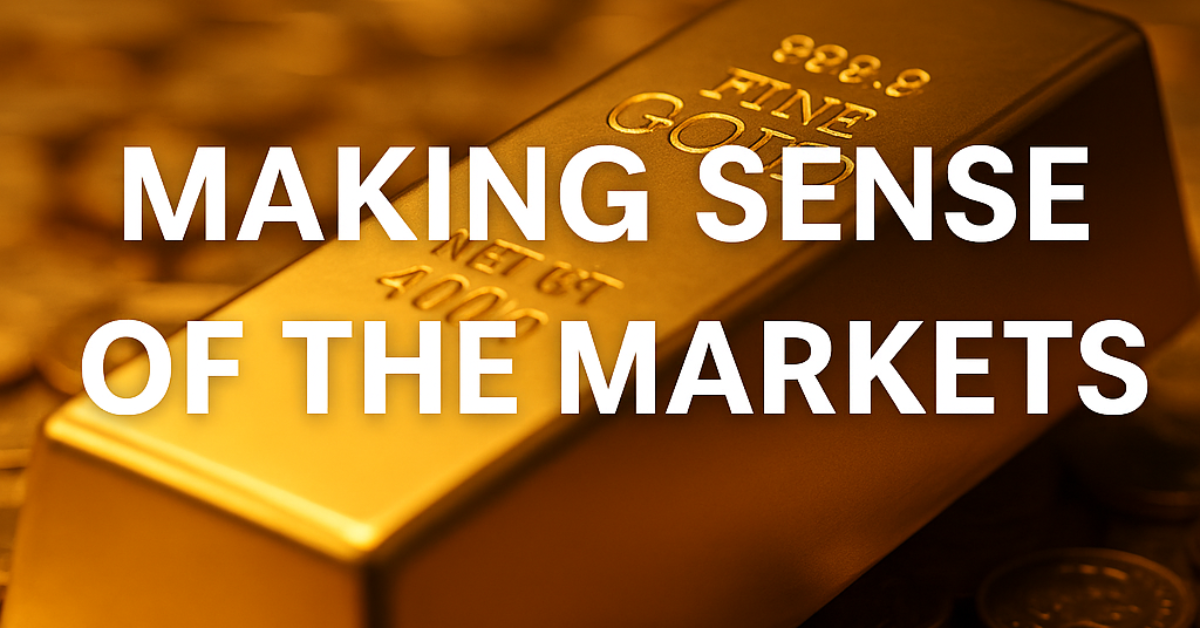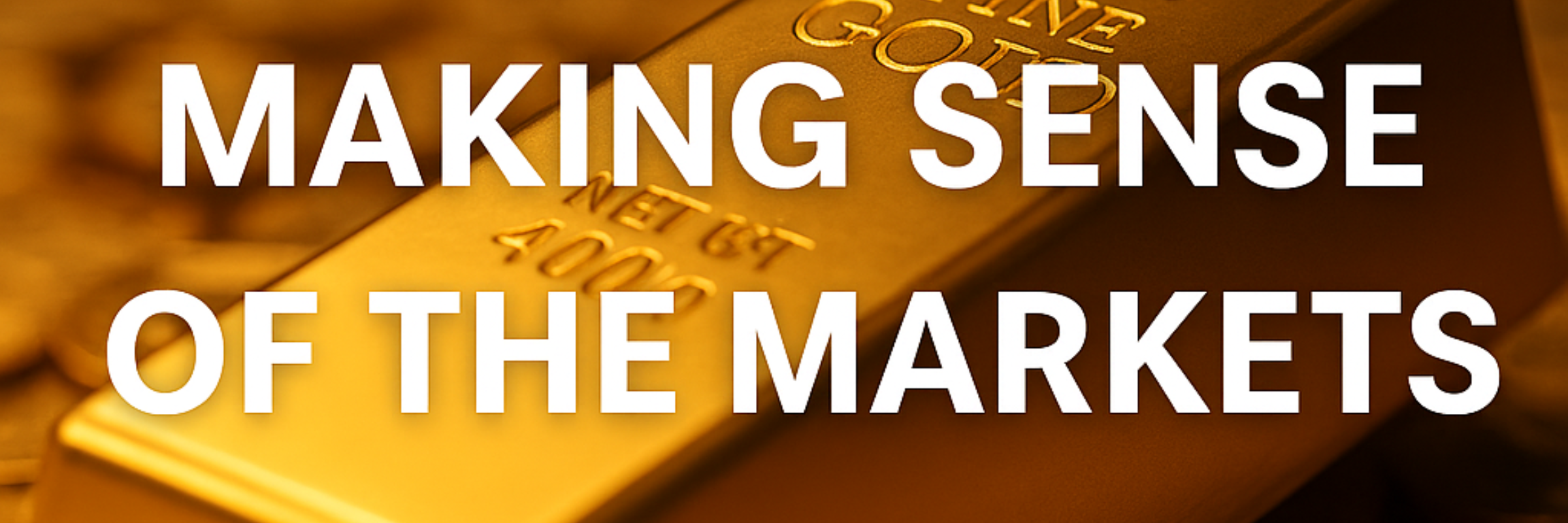
13 Oct Making Sense of the Markets

Introduction: Each week, the news regarding the financial markets inundates readers with sometimes overwhelming information, with opposing views and comments that are not necessarily helpful in making informed decisions or implementing sensible strategies that suit their long-term financial goals. Each week, I hope to delve into one timely topic that is currently making headlines and deliver answers that follow the five golden rules of journalism (What, When, Where, Who, Why, and How). My goal is to make you an informed consumer and enable you to make smart financial decisions. Let’s dig in!
The Current Gold Euphoria: What’s Driving It Now?
Gold has captured headlines, trading above $4,000 an ounce in early October—a nominal all-time high for the metal. Over the past year, the price of gold increased approximately 53.78% or about $1,415 per ounce. This surge is primarily due to the following factors:
- Central Bank Demand: Many central banks worldwide (both large and small) have been aggressively buying gold and taking physical delivery of the metal, partly to diversify away from the US dollar as a part of their reserves.
- Most significantly, China and other emerging market Central Banks purchased over one thousand metric tons last year, signaling a strategic shift from the U.S. dollar reserves.
- On fiscal uncertainty: Global investors are increasingly alarmed by US fiscal policy uncertainty and relentless borrowing to fund deficit spending for the foreseeable future. For instance, the U.S. debt-to-GDP ratio now exceeds 120%, and neither the Trump Administration nor Congressional Leadership seems to indicate any concern about deficit spending or burgeoning U.S. debt.
- Geopolitical uncertainty:
- Following Western sanctions in 2014, Russia strategically decided to de-dollarize its economy and strengthen its financial independence.
- Since 2014, the Russian Central Bank has added 1,200 tons of gold, amassing billions of reserves in the physical metal.
- Before its full-scale invasion of Ukraine, Russia transferred 40% of its National Welfare Fund into gold, a move now seen as a preparation for future sanctions.
- Since 2023, China has purchased 2,580 tons of gold (through the first half of 2025), with no signs of abatement soon. The country’s Central Bank now holds 24% of its reserves in gold, compared with 23% in US Treasuries as of June 2025. This ratio is anticipated to decline further, fueled by the ongoing trade and tariff tensions between the two countries.
- US Federal Reserve Interest Policy: With inflation moderating, the US economy is trending towards a long-term GDP growth rate of 1.5%, and the Fed is expected to pursue an accommodative monetary policy to address its mandate to secure the employment outlook for the foreseeable future. This interest rate outlook is clouding the dollar’s attractiveness, thus further strengthening the price of gold and its demand for the metal.
Will the Gold demand among the Central Banks Dim Soon?
- This inflection point largely depends on restoring fiscal sanity, or a perception of such, which is hard to predict under the current political atmosphere in Washington. Both political parties are now deadlocked in their ideologies and are willing to resort to extreme measures, such as shutting down the government, to achieve their stated goals.
- The drum of trade tariffs and sanctions to address U.S. geopolitical and economic concerns is now being banged hard, with hardly any room for measured diplomacy in negotiations.
- Notwithstanding several rounds of negotiations, the Russia–Ukraine war is now at a stalemate at best, and both sides are fighting the battle of attrition with abandon.
- The price of gold now reflects its role as a “safe haven” asset, and central banks such as China, Russia, and other emerging market economies are now hedging their bets in their reserve holdings against the dollar.
- Under the circumstances, it is hard to predict the path of the gold price in the short term without substantial and tangible progress in the factors mentioned earlier.
What should investors seeking time-compounding wealth over time do now with gold as an asset class?
- First, some facts to consider:
- Gold earned an internal rate of return (IRR) of 7.6% (nominal) and 2.6% (real) between 1972 and 2024, with inflation at 3.94% during the corresponding period.
- US large-cap equities, as measured by the S&P 500 index, have earned an internal rate of return (IRR) of 10.96% (nominal) and 6.8% (real), with dividends reinvested during the corresponding period.
- Equities as an asset class experienced a slightly higher volatility of 15.8% compared with gold at 13.7% (one-standard deviation) during the corresponding period.
- Gold’s strength lies in its scarcity and emotional appeal, not its ability to generate income or reinvested returns.
- Thus, equities enjoyed a higher nominal and real rate of return during the period under consideration compared to gold. The differential in the rates of return is significant, particularly when long periods of wealth accumulation are considered. Investors seeking long-term growth must weigh this opportunity cost carefully.
BOTTOM-LINE:
Gold, as an asset class, plays a constructive role in portfolio diversification and deserves a modest allocation of 1% to 3% depending on risk tolerance.
- Investors needing to make this allocation in their portfolio now are advised to use dollar cost averaging over the next twelve months instead of chasing the metal at these prices.
- Allocation to gold is intended for long-term holding in the portfolio, notwithstanding interim volatility, as it shines in periods of geographical tensions and acts as a hedge against inflation.
